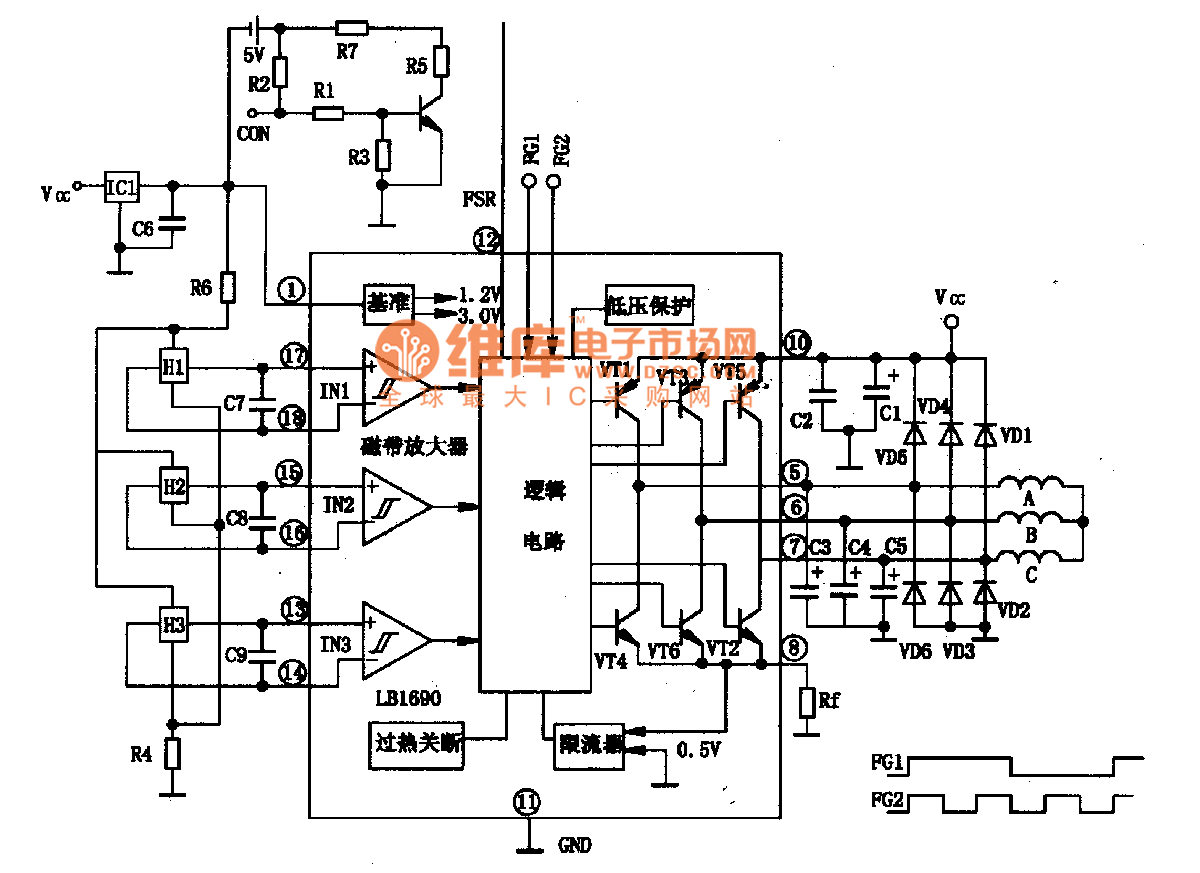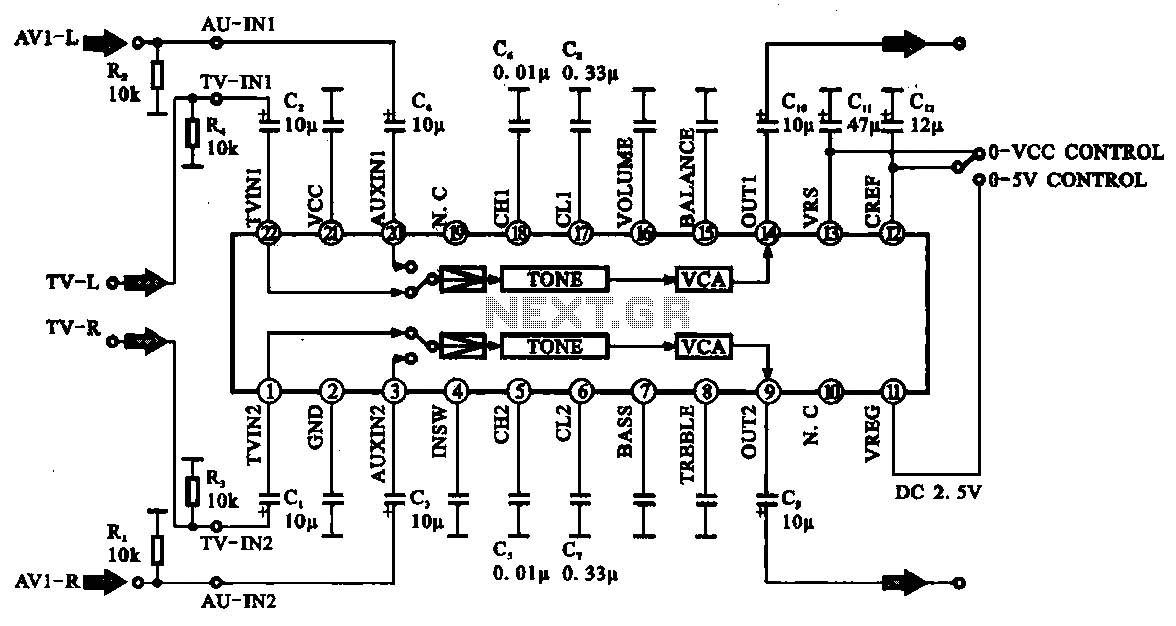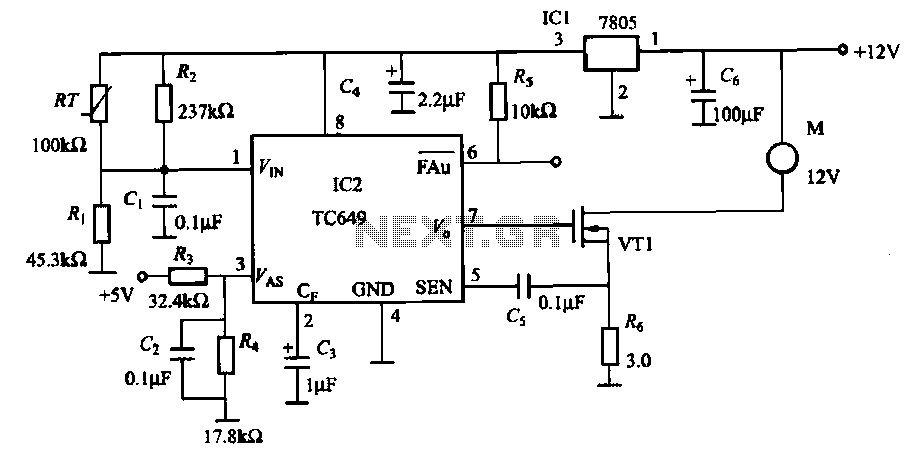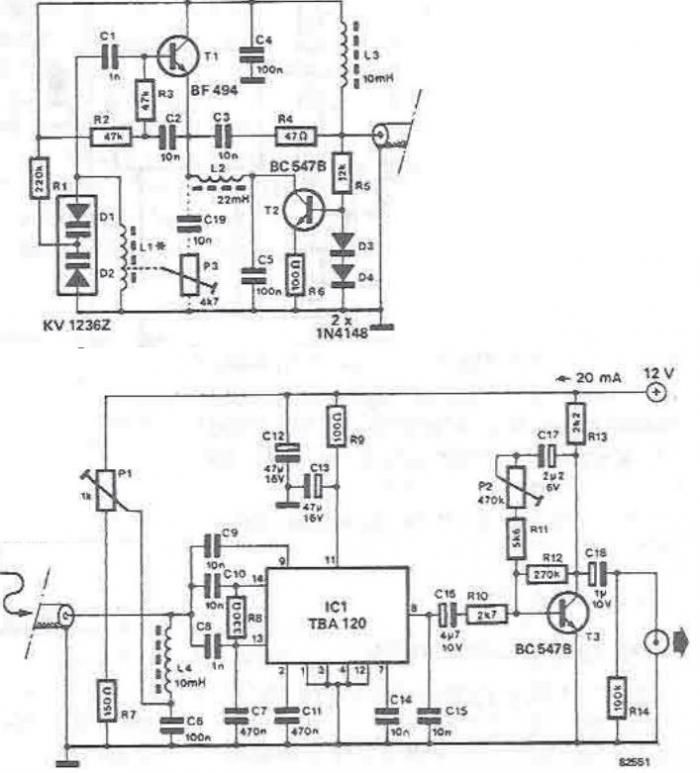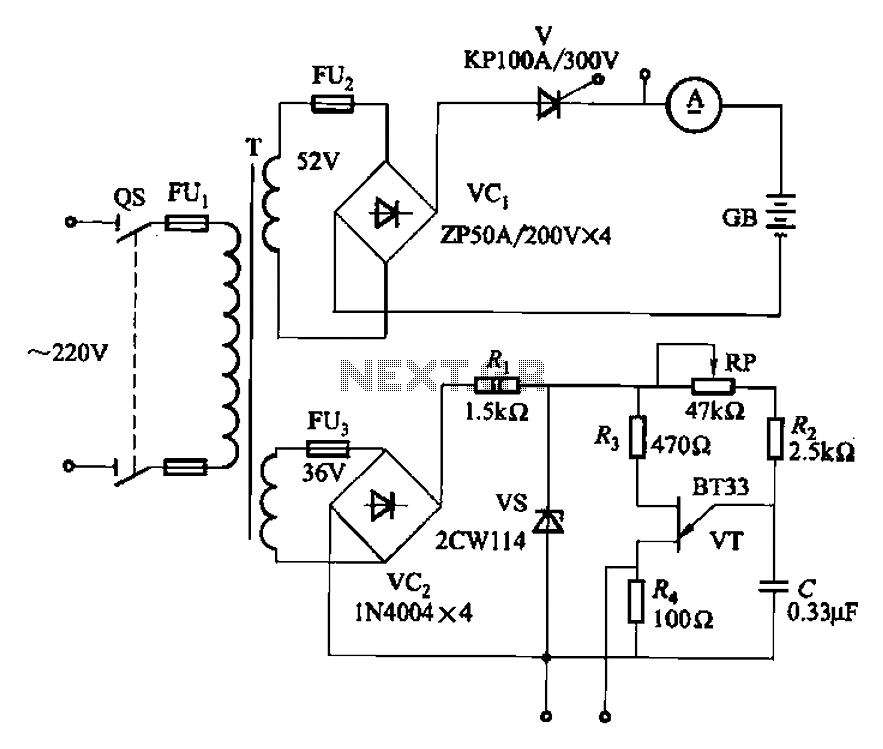
dc motor controller circuit using 741
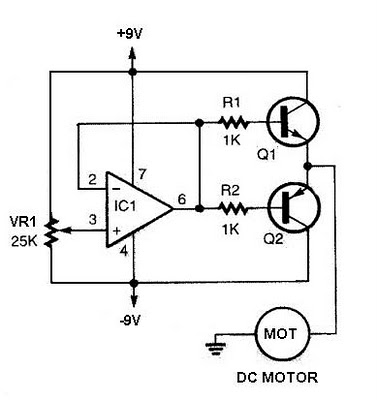
The speed increases in either direction as the potentiometer VR1 is adjusted toward its ends. The TIP3055 Q1 NPN power transistor has a collector current specification of 15A and a VCE0 rating of 60V DC. The MJE34 Q2 PNP power transistor has a collector current specification of 10A and a VCE0 rating of 40V DC.
The described circuit involves a variable speed control mechanism utilizing a potentiometer and two power transistors, TIP3055 and MJE34. The potentiometer, labeled as VR1, acts as a variable resistor that adjusts the input signal to the transistors based on its position. When VR1 is turned, it changes the resistance in the circuit, which in turn modifies the voltage and current flowing through the connected load, effectively controlling the speed of the motor or device in question.
The TIP3055, an NPN power transistor, is capable of handling a collector current of up to 15A, making it suitable for high-power applications. Its maximum collector-emitter voltage (VCE0) rating of 60V DC indicates that it can operate safely within this voltage range without risk of breakdown. This transistor is typically used in the output stage of the circuit, where it amplifies the current to drive the load.
In contrast, the MJE34, a PNP power transistor, has a lower collector current specification of 10A and a VCE0 rating of 40V DC. This transistor may be utilized in the circuit to control the direction of current flow or to switch the power supply to the load, depending on the configuration of the circuit. The combination of the NPN and PNP transistors allows for efficient control of the motor speed in both directions, providing versatility in operation.
The overall design ensures that the speed control is smooth and responsive to user input, with the potentiometer providing fine adjustment capabilities. Careful consideration must be given to heat dissipation for the transistors, as they may generate significant heat during operation, particularly at higher currents. Proper heat sinking and thermal management techniques should be implemented to maintain reliability and performance of the circuit.As the potentiometer VR1 is moved toward either end, the speed increases in whichever direction it is turning. The TIP3055 Q1 NPN power transistor has a collector current specs of 15A and VCE0 of 60V DC. The MJE34 Q2 PNP power transistor has a collector current specs of 10A and VCE0 of 40V DC. 🔗 External reference
The described circuit involves a variable speed control mechanism utilizing a potentiometer and two power transistors, TIP3055 and MJE34. The potentiometer, labeled as VR1, acts as a variable resistor that adjusts the input signal to the transistors based on its position. When VR1 is turned, it changes the resistance in the circuit, which in turn modifies the voltage and current flowing through the connected load, effectively controlling the speed of the motor or device in question.
The TIP3055, an NPN power transistor, is capable of handling a collector current of up to 15A, making it suitable for high-power applications. Its maximum collector-emitter voltage (VCE0) rating of 60V DC indicates that it can operate safely within this voltage range without risk of breakdown. This transistor is typically used in the output stage of the circuit, where it amplifies the current to drive the load.
In contrast, the MJE34, a PNP power transistor, has a lower collector current specification of 10A and a VCE0 rating of 40V DC. This transistor may be utilized in the circuit to control the direction of current flow or to switch the power supply to the load, depending on the configuration of the circuit. The combination of the NPN and PNP transistors allows for efficient control of the motor speed in both directions, providing versatility in operation.
The overall design ensures that the speed control is smooth and responsive to user input, with the potentiometer providing fine adjustment capabilities. Careful consideration must be given to heat dissipation for the transistors, as they may generate significant heat during operation, particularly at higher currents. Proper heat sinking and thermal management techniques should be implemented to maintain reliability and performance of the circuit.As the potentiometer VR1 is moved toward either end, the speed increases in whichever direction it is turning. The TIP3055 Q1 NPN power transistor has a collector current specs of 15A and VCE0 of 60V DC. The MJE34 Q2 PNP power transistor has a collector current specs of 10A and VCE0 of 40V DC. 🔗 External reference
